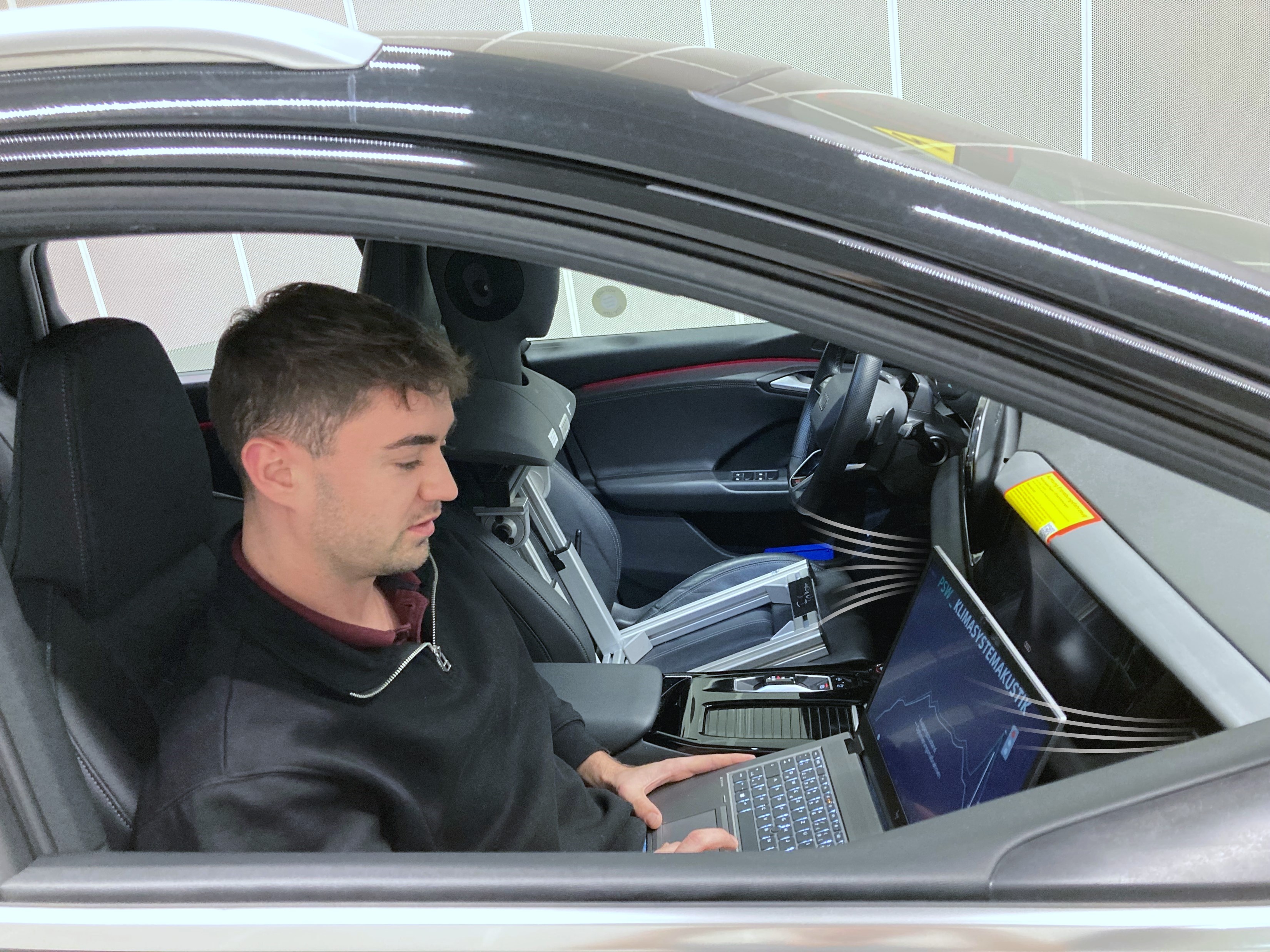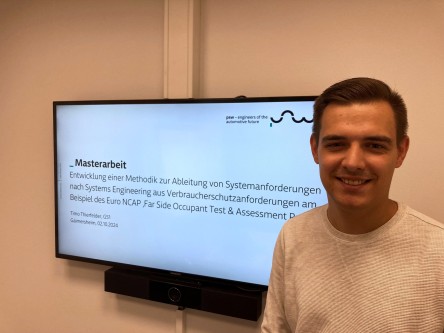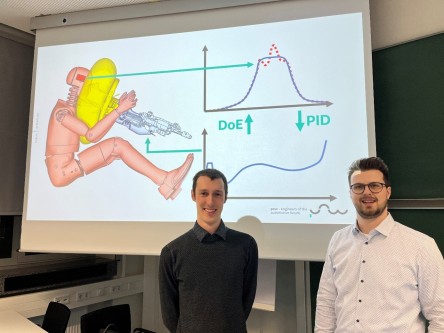The ventilation system has a significant impact on the acoustics inside the vehicle because of its frequency of use, location and proximity to the passengers. Tobias and his colleagues test the systems in the in-house acoustic chamber at PSW. The first step is to run acoustic measurements on the components of an air-conditioning system, both on an individual basis and as an assembly mounted on the test rig. “We can generate different air mass flow profiles depending on the specifications,” explained Tobias. “As the development process continues, the air-conditioning system is then installed in the prototypes and validated in the overall vehicle context.”
Various measures are used to counter any background noises identified, depending on the frequency. “One example of the work I did in my master’s thesis at PSW was to assess the use of reflection silencers in air ducts. These are good for low-frequency, narrowband noise,” added Tobias. Colleagues investigating higher-frequency noises, by contrast, often work with sound insulation mats which absorb the noise. “My job in the climate acoustics section is certainly very exciting because the subject is becoming increasingly relevant due to advances in electric vehicles. We provide genuine added value for ride comfort,” said Tobias, happy with the fruit of all their work.


